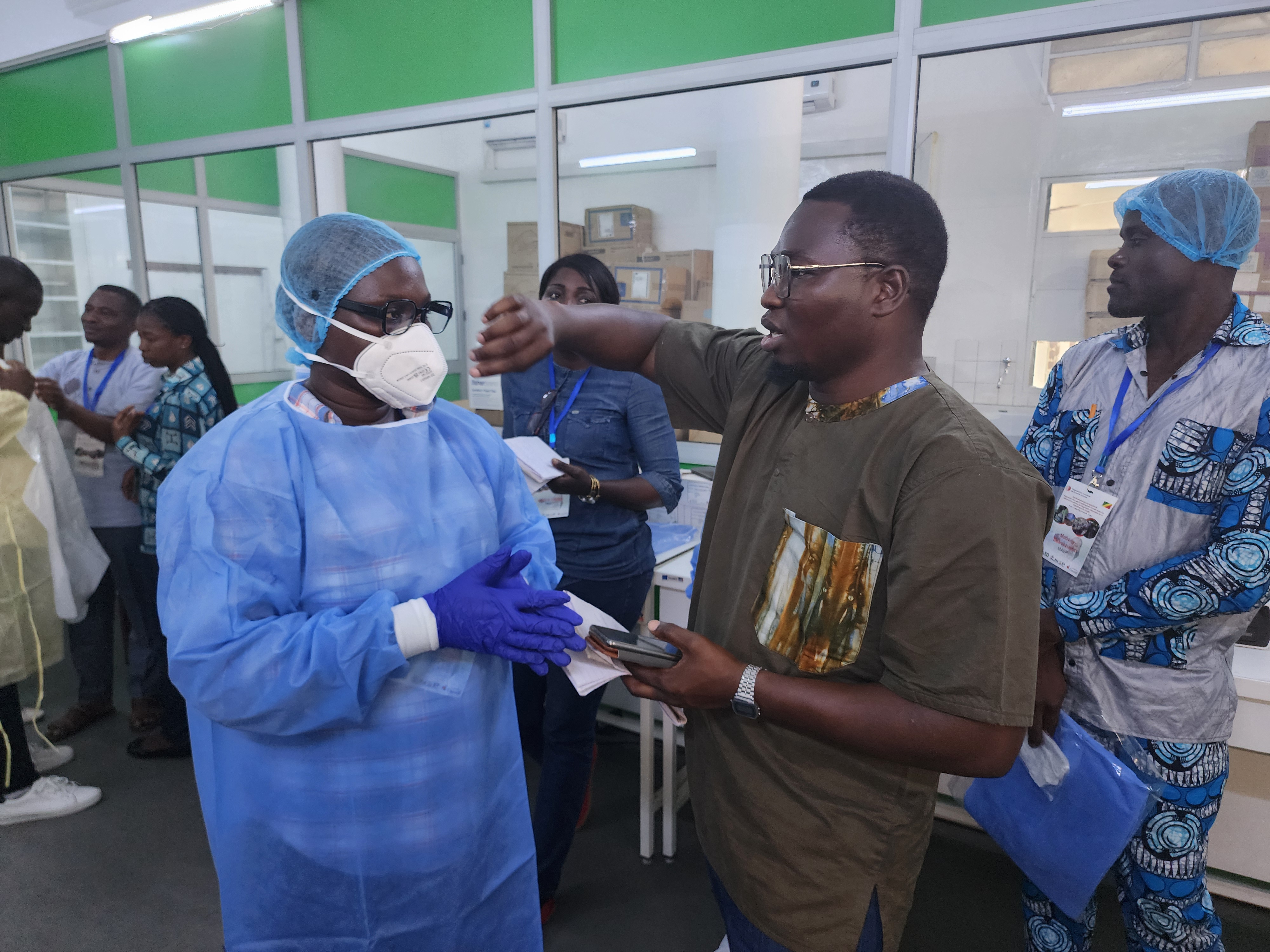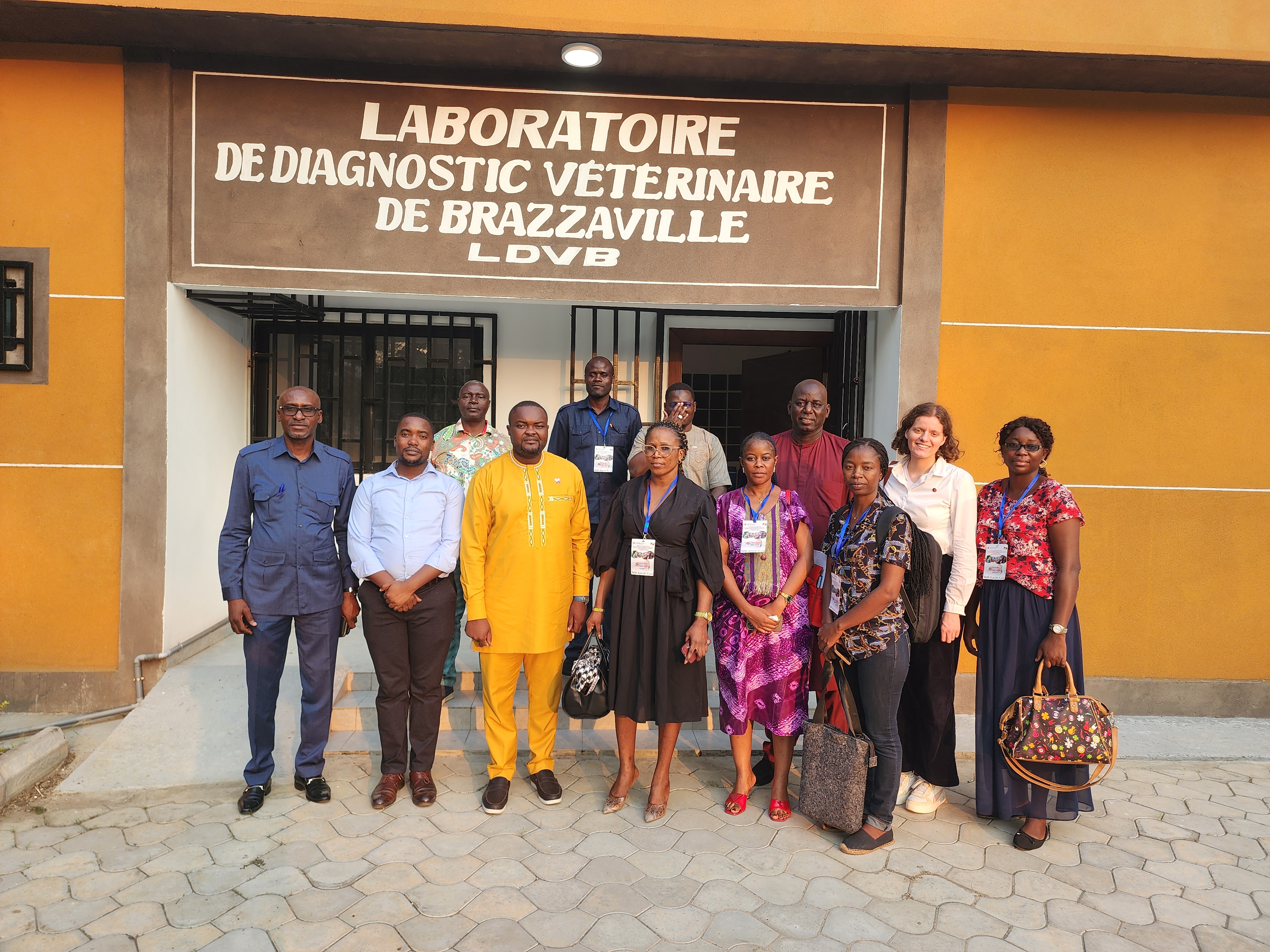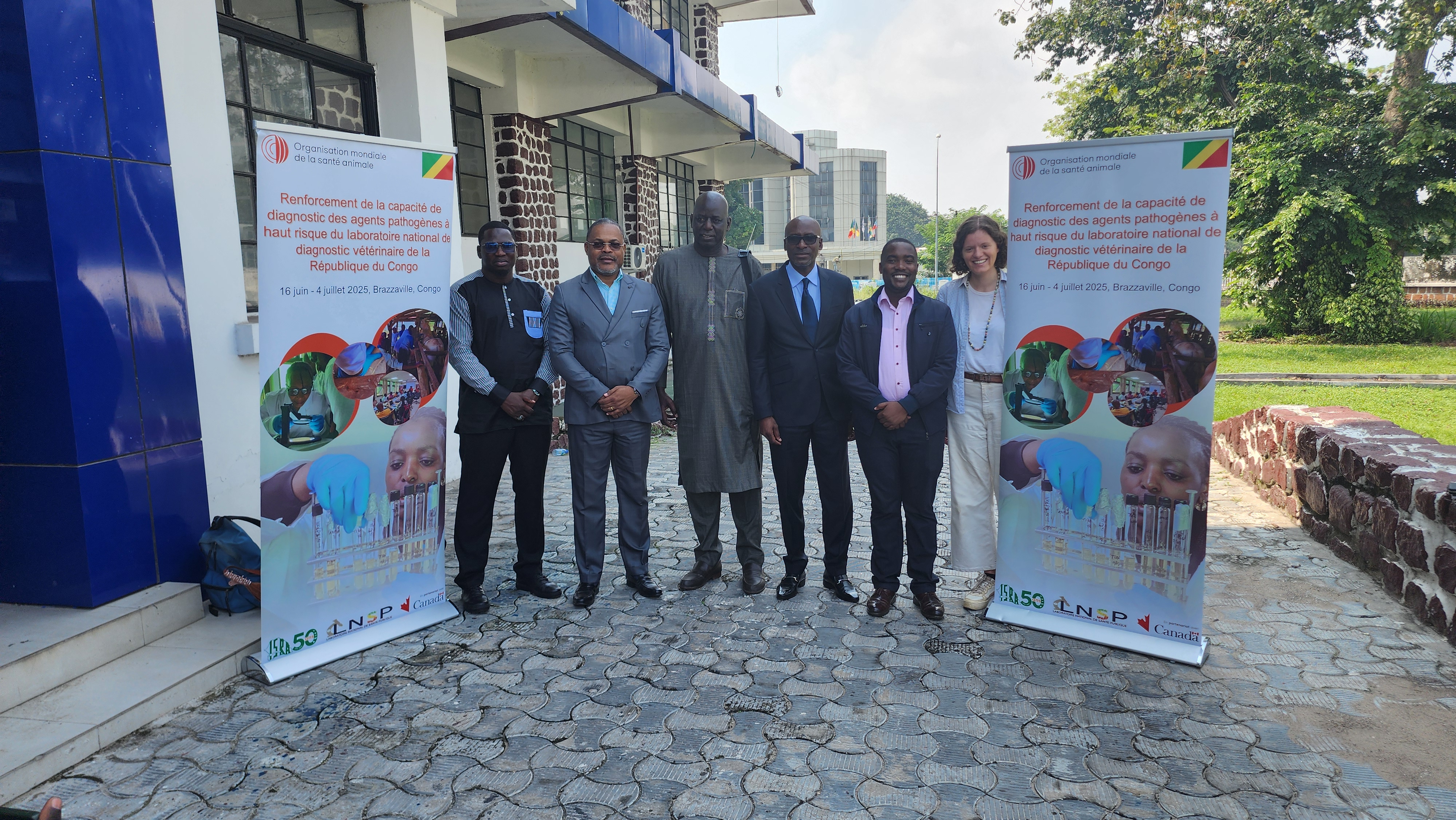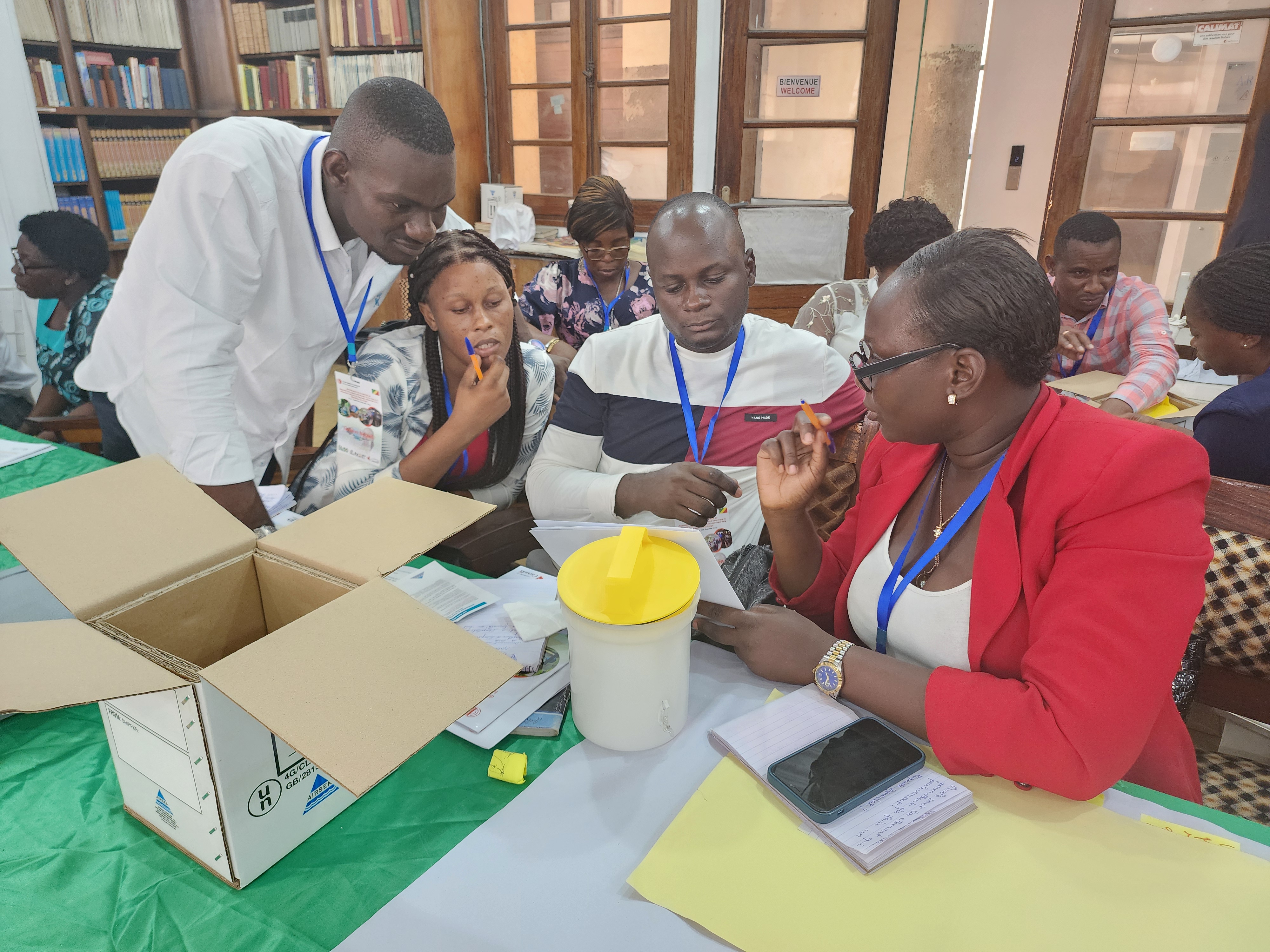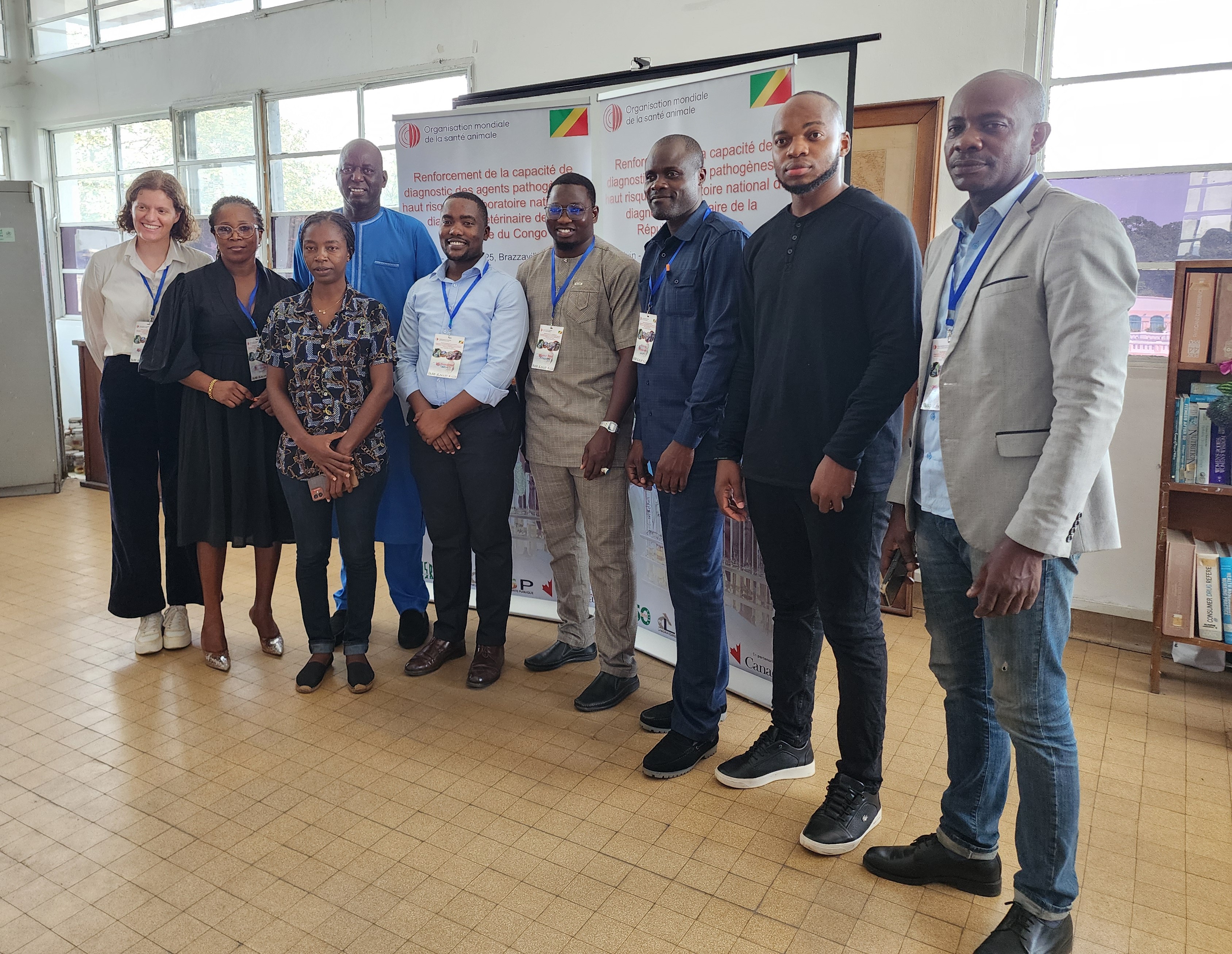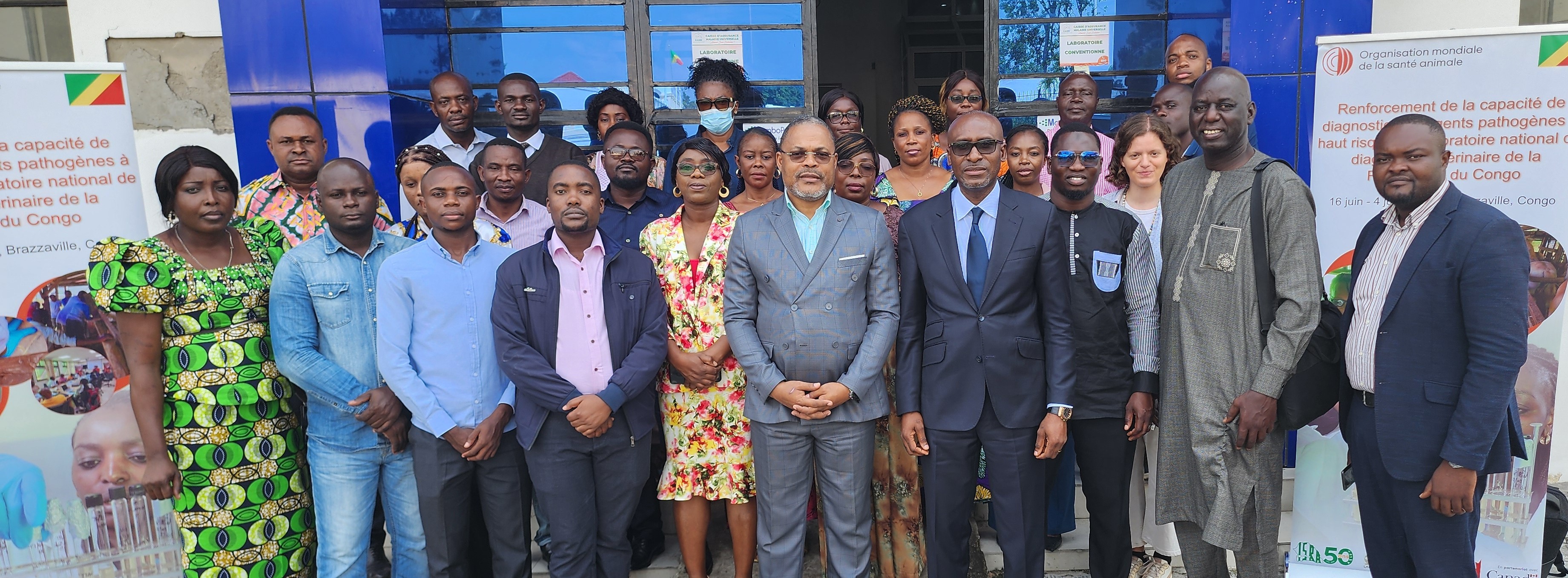
The Republic of Congo faces ongoing threats from high-consequence pathogens such as Rift Valley Fever (RVF), peste des petits ruminants (PPR), Ebola Virus Disease (EVD), African Swine Fever (ASF), Highly Pathogenic Avian Influenza (HPAI), and Anthrax. These diseases pose serious risks to both human and animal health due to their high mortality rates and potential for rapid spread. Given the critical role of livestock in food security and livelihoods across the country, such outbreaks also carry significant economic consequences.
To effectively manage and respond to these threats, strong disease surveillance, diagnostic capacity, and robust biosafety and biosecurity systems are essential. While the Laboratoire de Diagnostic Vétérinaire de Brazzaville (LDVB) is equipped with essential infrastructure, it is not yet fully operational, limiting the country’s ability to detect and respond rapidly to disease outbreaks.
To support the operationalisation of LDVB, the Republic of Congo sought capacity-building assistance from the World Organisation for Animal Health (WOAH) through the Fortifying Institutional Resilience Against Biological Threats (FIRABioT) project. As an initial step, a Training of Trainers (ToT) program was held from 5–16 May 2025 at the National Laboratory for Livestock and Veterinary Research (Laboratoire National d’Elevage et de Recherches Vétérinaires, LNERV) in Dakar, Senegal. Five Congolese laboratory professionals participated in this intensive training, which focused on advanced diagnostic techniques for the safe and effective detection of high-consequence pathogens.
Group picture after the visit of the Laboratoire de Diagnostic Veterinaire de Brazzaville (LDVB). Picture © I. Busuulwa (woah) 2025.
Building on the initial Training of Trainers, a comprehensive three-week in-country training was held in Brazzaville from 16 June to 4 July 2025. Hosted at the Laboratoire National de Santé Publique (LNSP), the program was structured into two distinct phases. Phase 1 (Week 1) focused on laboratory biosafety and biosecurity, equipping participants with essential skills for managing biological risks. Phase 2 (Weeks 2–3) concentrated on the technical diagnosis of two high-consequence animal diseases: Contagious Bovine Pleuropneumonia (CBPP) and Rift Valley Fever (RVF). The training brought together 20 veterinary and public health laboratory professionals—including the five ToT alumni—fostering cross-sectoral collaboration and strengthening national diagnostic capacity.
Opening remarks were delivered by Dr. N’Kaya-Tobi, WOAH Delegate and FIRABioT Focal Point for the Republic of Congo, and Prof. Fabien Roch Niama, Director General of LNSP. Both speakers underscored the importance of collaboration between the public health and animal health sectors, particularly in managing zoonotic diseases and reducing the risks associated with the accidental or deliberate release of pathogens.
Dr. N’Kaya-Tobi, WOAH Delegate for the Republic of Congo (3rd from the right) and the facilitators. Fltr: Mayékor Diouf, Biological Risk Manager at Laboratoire National de l'Elevage et des Recherche Vétérinaire (LNERV/ISRA), Prof. Fabien Roch Niama, Director General LNSP, Dr. Modou Moustapha Lo, Virologist at LNERV/ISRA, Dr. N’Kaya-Tobi, WOAH Delegate for the Republic of Congo, Ian Peter Busuulwa, FIRABioT Project Officer, Emma Wijers, Intern FIRABioT. Picture © I. Busuulwa (woah) 2025.
Phase 1: Laboratory Biosafety and Biosecurity Training (June 16–20, 2025)
The workshop combined theoretical sessions, covering topics such as waste management, good laboratory practices, and the use of personal protective equipment, with practical, hands-on exercises. These sessions were conducted under the supervision of facilitators from the LNERV, Senegal. Participants also received an introduction to WOAH’s efforts in biological threat reduction and were familiarized with relevant codes and guidelines on biosafety, biosecurity, and animal health.
On the final day, participants proposed key next steps for operationalizing LDVB. These included drafting standard operating procedures (SOPs), receiving additional training on sampling techniques and carcass disposal, establishing a legislative framework for laboratory operations, and strengthening collaboration with LNSP to leverage its diagnostic expertise. A site visit to the LDVB was also conducted, during which the team discussed current challenges related to financing, infrastructure, and staffing.
The workshop was facilitated by:
Participants practicing triple packaging during the session on the transport of biological materials. Picture © E. Wijers (woah) 2025.
Phase 2: Technical Training on CBPP and RVF Diagnosis (June 22–July 4, 2025)
The second phase of the training focused on the technical diagnosis of two high-consequence animal diseases: Contagious Bovine Pleuropneumonia (CBPP) and Rift Valley Fever (RVF). Led by specialists from LNERV—Ms Fatou Tall Lo, Ms Racky Oumar Ba, and Ms Aminata Ba—the training combined theoretical modules on sample handling, disease epidemiology, and diagnostic principles with hands-on laboratory practice. Participants were divided into two specialized groups:
The training was further supported by the Congolese ToT alumni, who played a facilitative role under the technical guidance of the LNERV experts. This collaborative approach enhanced specialization and practical application, enabling participants to build confidence in advanced diagnostic procedures.
The LNERV facilitators and WOAH team pose for a photo with the Congolese ToTs
This capacity building initiative forms part of the Republic of Congo’s activities as a beneficiary of the Fortifying Institutional Resilience against Biological Threats (FIRABioT) Project. This project is funded by Global Affairs Canada’s Weapons Threat Reduction Programme in support of the Global Partnership Signature Initiative to Mitigate Biological Threats in Africa.
